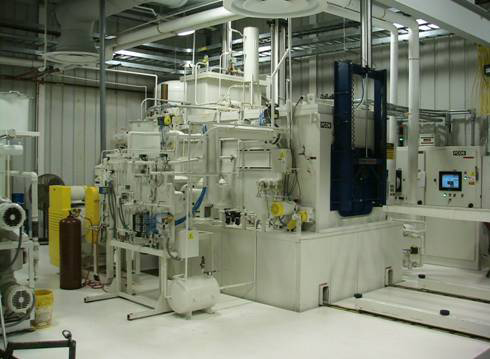Engineering Reference
Precision Ball & Roller Bearings
(Medium to Large Diameter)
Carburizing
NHBB continually investigates the latest in materials technology, alloying techniques and heat-treat methods in order to design and manufacture more complex bearing components for the aerospace market. Below we describe our capability to carburize and case-harden M50 NiL and other special alloys.
Continual development in gas turbine engine technology is leading to engines running at greater speeds and temperatures. These engines require bearings that are capable of enduring increased demands. When engines run at high speeds and elevated temperatures, the bearing rings increase in diameter because of centrifugal forces and thermal expansion. In order to keep the inner ring fixed to the shaft, a greater press fit at ambient temperatures is required. However, the tighter press fit of the inner ring causes high tensile stresses within the bearing. A typical through-hardened bearing material such as M50 would crack under these conditions. An excellent solution to this problem is the use of a carburized steel alloy.
Carburizing is a heat-treat process where alloys with low carbon content are exposed to a carbon rich atmosphere at an elevated temperature. Carbon diffuses into the exposed surfaces of the ring. The ring is then heat-treated to the desired surface hardness while leaving the carbon-deficient core relatively soft. Finished carburized alloys have a thin outer case, with hardness values comparable to M50, which provide the needed rolling contact fatigue properties. In contrast, the inner core of the carburized ring is relatively soft and ductile, with desirable fracture toughness properties that allow the bearing to tolerate high internal tensile stresses. These characteristics create a tougher bearing that is well suited for tight press fits or highly loaded flanges.

NHBB’s vacuum carburizing furnace.

